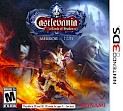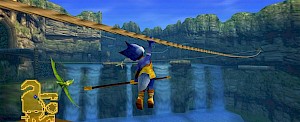Review: Castlevania: Lords of Shadow - Mirror of Fate
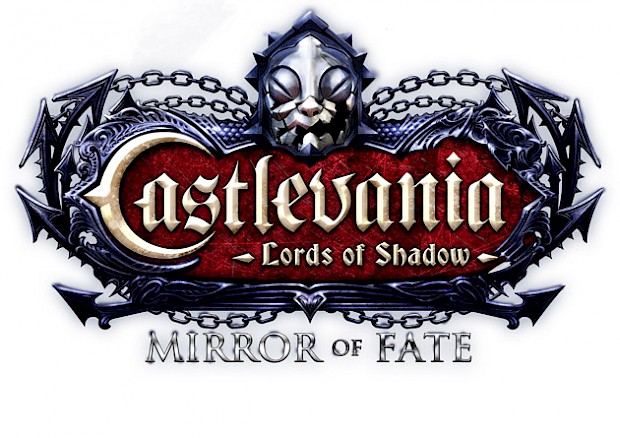
Posted 06 Mar 2013 at 08:50 by Derek Wheatley
The second title in the reboot of the Castlevania franchise, Lords of Shadow: Mirror of Fate is set 25 years after the original Lords of Shadow released on Playstation 3 and Xbox 360 in 2010. Published by Konami and developed by Spanish company Mercurysteam, Mirror of Fate once again finds the Belmont family and the forces of darkness sparring against each other in a selection of creepy locations.
The key theme in this game of that of vengeance. After Gabriel becomes Dracula during the events of Lords of Shadow, his son Trevor marches into his father’s new dark castle with the intent of avenging the death of his mother who died at the hands of Dracula’s dark forces. In turn, Trevor’s son Simon later enters Dracula’s domain to avenge his father. Alucard on the other hand… Well, I won’t spoil that bit. The story unfolds in cel-shaded cutscenes with each character aided by a mysterious entity known as the Lost Soul, whose motives aren’t all that clear…
As with other 3D handheld Castlevania titles, Mirror of Fate is played in 2D but with a stereoscopic 3D background. Although this does look very nice at times, it occasionally likes to focus more on showing off this visual possibility as opposed to focusing on your character; however, it really does offer a sense of grandness that 2D Castlevania titles simply cannot offer. When evading an enemy you will quite often wish that you could go around the room instead of the standard left and right motions when it decides to show off the impressive scale of a room.
There are three main playable characters: Simon Belmont, his father Trevor Belmont and Alucard. The timeline takes place in reverse so the continuity is disjointed and it sometimes leads to getting your Belmonts mixed up. There is a fourth brief period of play with Gabriel Belmont in the prologue, before he became main baddie Dracula. Each chapter contains a wealth of hacking and slashing with the occasional puzzle thrown in, but it would have been nice to have more puzzles instead of block pushing and pulling.
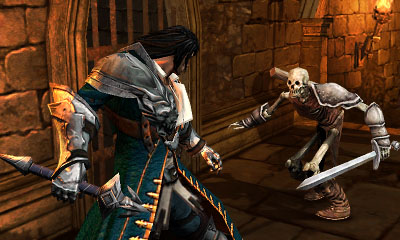 The primary weapon for everyone is a trusty Belmont whip with the prime variety coming in the form of each characters' secondary weapons and magical capabilities. In true Castlevania style these aren’t given to you straight away, you must earn and discover them. Some are just for optional use but the majority are essential to progress, even if it is to open just one door. Other optional doors can be opened to find health and magic increasing chests, which naturally involves some degree of backtracking. However, due to the game’s occasional difficulty spikes and the chunk of health stealing obstacles it is heavily recommended that you do so as your health bar starts at half the maximum capacity.
The primary weapon for everyone is a trusty Belmont whip with the prime variety coming in the form of each characters' secondary weapons and magical capabilities. In true Castlevania style these aren’t given to you straight away, you must earn and discover them. Some are just for optional use but the majority are essential to progress, even if it is to open just one door. Other optional doors can be opened to find health and magic increasing chests, which naturally involves some degree of backtracking. However, due to the game’s occasional difficulty spikes and the chunk of health stealing obstacles it is heavily recommended that you do so as your health bar starts at half the maximum capacity.
The unchangeable primary whip is clearly a reference to the original Belmont action in the first Castlevania in 1986 and although it is a nice sentimental touch, it can lead to dull combat moments when button bashing is the quickest way to defeat your foe. Since there isn’t a plethora of weaponry to collect, the controls are simple; Y controls your whip and X offers an attack with a greater range. Additional heavy damage whip combos can be learnt by levelling up via the usual way of defeating enemies as well as reading the last testaments of fellow Brotherhood of Light knights whose corpses are found throughout Dracula’s castle, providing another reason to return to a previously visited area with a freshly acquired ability. Collectable bestiary entries offer a nice description and a 3D model of each enemy in the game. The touch screen is primarily used as a map screen and little tags can be placed anywhere with custom notes to act as reminders of areas you may have been unable to reach the first time you pass them.
The trailer boasts that the game offers 20 hours of gameplay, yet I managed to complete Normal mode with 100% in under 11 hours. Completing the game unlocks Hardcore mode for those who want a more difficult whipping adventure.
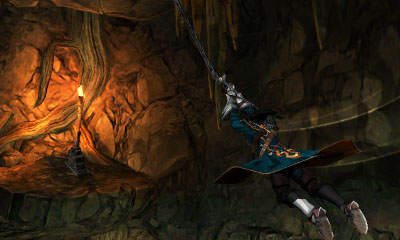 Sadly gone are the catchy, yet gothic, tunes previously associated with the former handheld Castlevania titles composed by Michiru Yamane. The reboot relies on an atmospheric orchestra, composed by Óscar Araujo with vocals performed by the Bratislava Symphony Orchestra. This feels suited to a game this dark and foreboding, but doesn’t feel as Castlevania-y as it used to. If like me, you enjoy playing your games with the volume on high, headphones may be required as at maximum volume the sound can become tinny when the sound starts to hit those high notes, spoiling the atmosphere as you find yourself forced to turn the volume down.
Sadly gone are the catchy, yet gothic, tunes previously associated with the former handheld Castlevania titles composed by Michiru Yamane. The reboot relies on an atmospheric orchestra, composed by Óscar Araujo with vocals performed by the Bratislava Symphony Orchestra. This feels suited to a game this dark and foreboding, but doesn’t feel as Castlevania-y as it used to. If like me, you enjoy playing your games with the volume on high, headphones may be required as at maximum volume the sound can become tinny when the sound starts to hit those high notes, spoiling the atmosphere as you find yourself forced to turn the volume down.
Mirror of Fate is an enjoyable game, but those expecting something akin to previous handheld entries better prepare themselves for the shock that this is something new. The game is designed to amaze, with the vast chambers given impressive depth by the 3D visuals and mystify by withholding many of the game's intentions until later on. It’s hard to see where the series will take us next, but the sign of a good reboot is change.
N-Europe Final Verdict
An enjoyable game and there is potential in what Mercurysteam are trying to achieve, but it may take a few more titles before this reboot starts to really take off.
- Gameplay3
- Playability4
- Visuals4
- Audio4
- Lifespan3
Final Score
8
Pros
Fantastic 3D visuals
Simple controls
Intriguing storyline
Cons
Combat can be repetitive
Too short
Not enough puzzles to offer variety


